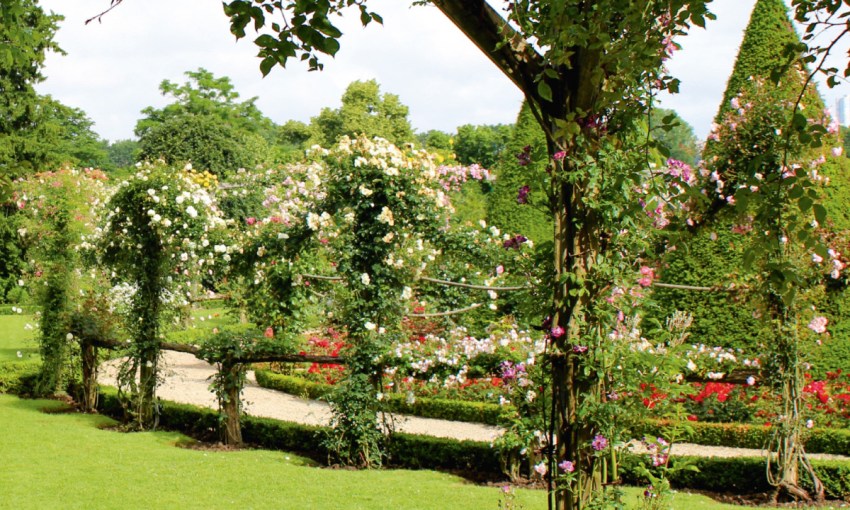There is nothing more spectacular than the impact of a well-trained and performing pillar or climbing rose, and here's how to get them looking their best.
How to prune climbing and pillar roses
The most famous rose gardens around the world feature these roses. The notable rose gardens in South Australia also display them and they can surprise and delight us for nearly nine months each year.
To get the best out of climbing and pillar roses, good pruning and training is required. Unfortunately, many gardeners are put off by the mass of stems and foliage which confronts us at pruning time. However, if we all follow a few simple rules, climbers and pillars are actually not that complicated to prune and train. Indeed, the results can create lovely artistic displays. I recommend pruning in July and August. Avoid the temptation to prune too early.
Preparation
Roses have thorns and climbing roses have many thorns. To tackle them, wear old clothes including long sleeves, sturdy footwear, a brimmed hat and eye protection. Wear all leather gloves – gauntlet gloves are ideal as they provide added protection.
A high-quality pair of bi-pass secateurs, like Felco or Fiskars, is essential. Choose a size that fit comfortably into your hand. You will also need good quality loppers and a pruning saw. Make sure your tools are sharp. A pruning saw is ideal for cuts wider than 2.5cm and for removing old canes. Most garden centres can provide you with good advice to ensure you have the necessary equipment.
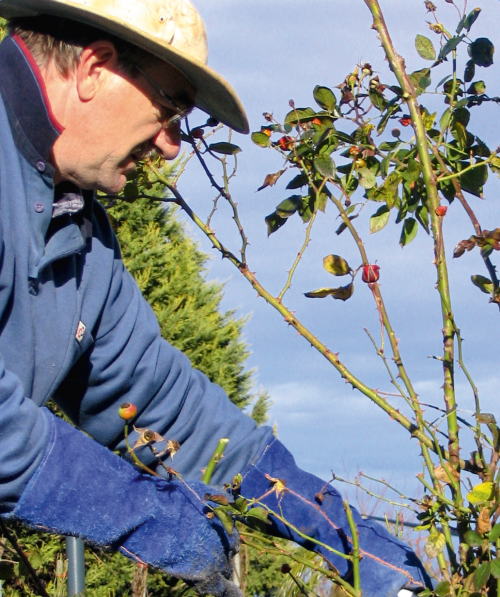
Study the plant before you act
If you carefully study the climber or pillar and the structure that supports it, the plant almost “tells you” what to do. First, look at the base of the plant. If it has performed well in the growing season, there will be a number of new canes (these are still green with no side shoots) emanating from the base. These are called “water shoots” and will provide the best flowers in the spring. Therefore, do not remove these.
Secondly, move up from the base of the plant, following older canes (these are those which were left following the previous year’s pruning). Some of these will have strong new canes emerging partially along the old stem. Others will only have short stems all along the cane. These would have produced the flowers during the previous year.
Then, determine how many stems you require to cover your trellis for a climber or pillar structure. As a guide, most climbers need at least 12 canes in order to wrap six canes onto a trellis on each side of the plant. These could be secured as a fan shape on a lattice or espaliered if you have a trellis. I prefer a trellis structure for climbers as the plant is easier to manage and you can have it at least 20-30cm off a fence or wall to enable air flow around the plant.
For pillars, I also recommend 12 canes with four reaching the top of the pillar, four reaching two-thirds up the pillar and four stopping at one-third the height of the pillar. This ensures even flowering from the base to the top of the pillar rose.
Every winter at pruning time remove as many older canes as possible and retain the young, one-year-old canes (last season’s new growth). If you need to retain some older canes, spur prune the side shoots, like you would with a climbing rose.
Wrap the canes around the pole, one at a time, half in a clockwise direction and the other half in an anti-clockwise direction and then tie them securely at the top. I use a fine nylon rope that will not rot.
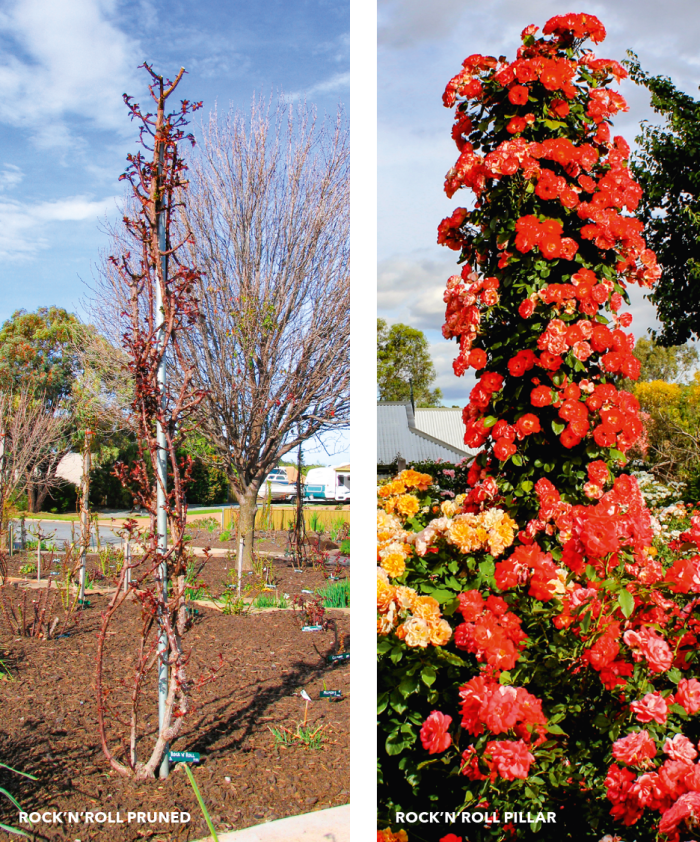
Unusual and colourful, “Colorbreak” and “Rock ‘n’ Roll” are two of my favourite pillar roses that create a strong vertical element in my garden and produce many flowers. Try a few pillar roses in your garden and you’ll be surprised by the flowering spectacle they can create.
Make your cuts
Now we know how many canes we need, we can perform the actual pruning.
The new water shoots simply need about 20cm removed from their tips. Some of the old canes are useful if they have a strong, fresh cane further along. Cut off the old cane just above the new long cane you want to retain. This will help rejuvenate the plant. If necessary, you can retain older canes and spur prune the side stems back to two or three buds (about 5-10cm).
The next step is to remove the pruned two or three old canes and also strip off the foliage from the remaining canes.
You will be left with many bare long canes. If you have more than you need, you can remove some of the older canes with a clean flush cut at the base of the plant.
Training the rose: wrap on or tie down the canes you wish to keep
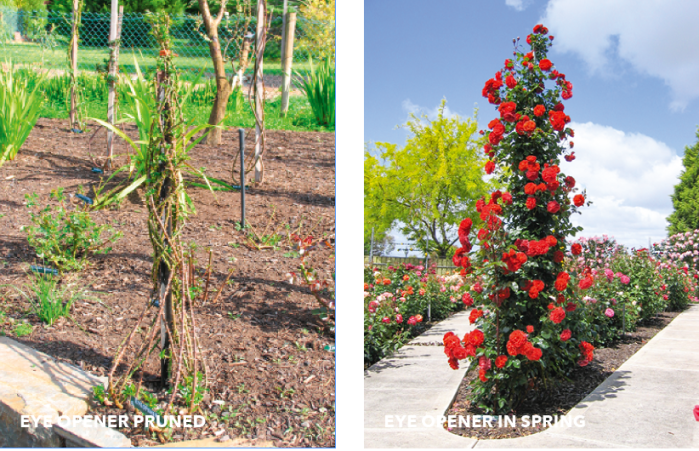
If you have a trellis or horizontal wires, you can easily wrap canes around the wires, much like wrapping on grape vine canes. The rose cane is surprisingly flexible and will bend relatively easily once it has matured.
Position and secure the longest canes first near the top, and use the shorter canes lower down the structure. If the canes are too long for a particular location, they can be shortened to the correct length. If necessary, canes can be held in position with ties – but don’t make them too tight as the cane has to grow and a tight tie may strangle it, causing it to die.
Apply winter spray and root stimulant
Pruning remnants and any old leaves should be removed because they are covered in fungal spores and nasty insect eggs. When the clean-up is finished, give your bare rose canes a spray to kill any fungal spores or insect eggs that may remain. Pest oil, winter oil or Lime Sulphur are good products to use. Also give the roots an application of Neutrog Seamungus. It’s a great soil tonic, which will stir the roots into action in early spring. I recommend adding a layer of mulch in late winter while it is easy to move between the rose bushes, without damaging the fragile young shoots.
Now you can sit back, relax and wait for your roses to give you a magnificent flush of flowers in the spring.
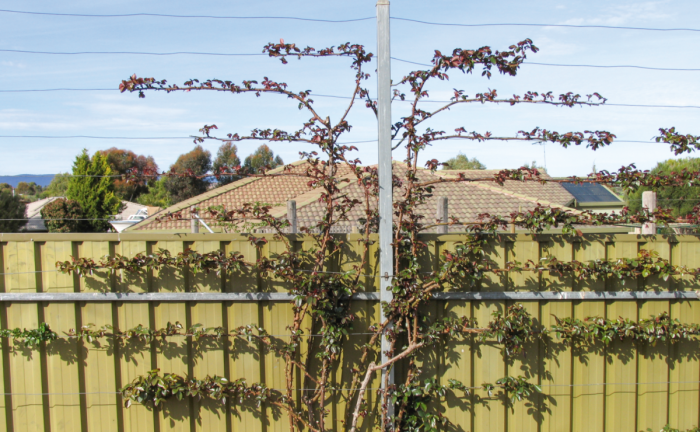
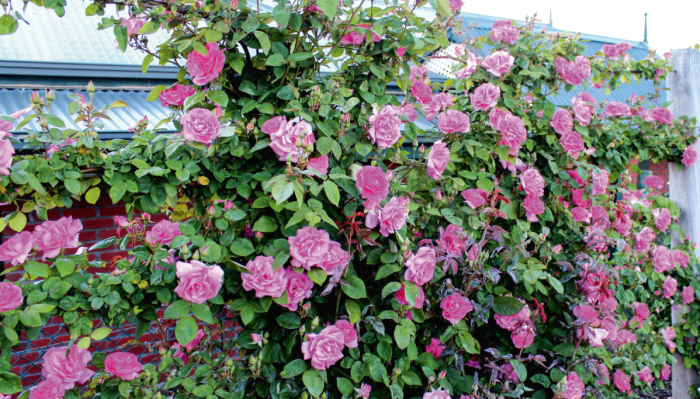
The interest in roses in South Australia is extraordinary. We are fortunate to have an excellent climate to grow roses and create an impressive display in our gardens, especially in spring and autumn.
Rose Society of South Australia, sarose.org.au
Kelvin Trimper AM is a past president, World Federation of Rose Societies and Life Member
of the Rose Society of SA Inc.



